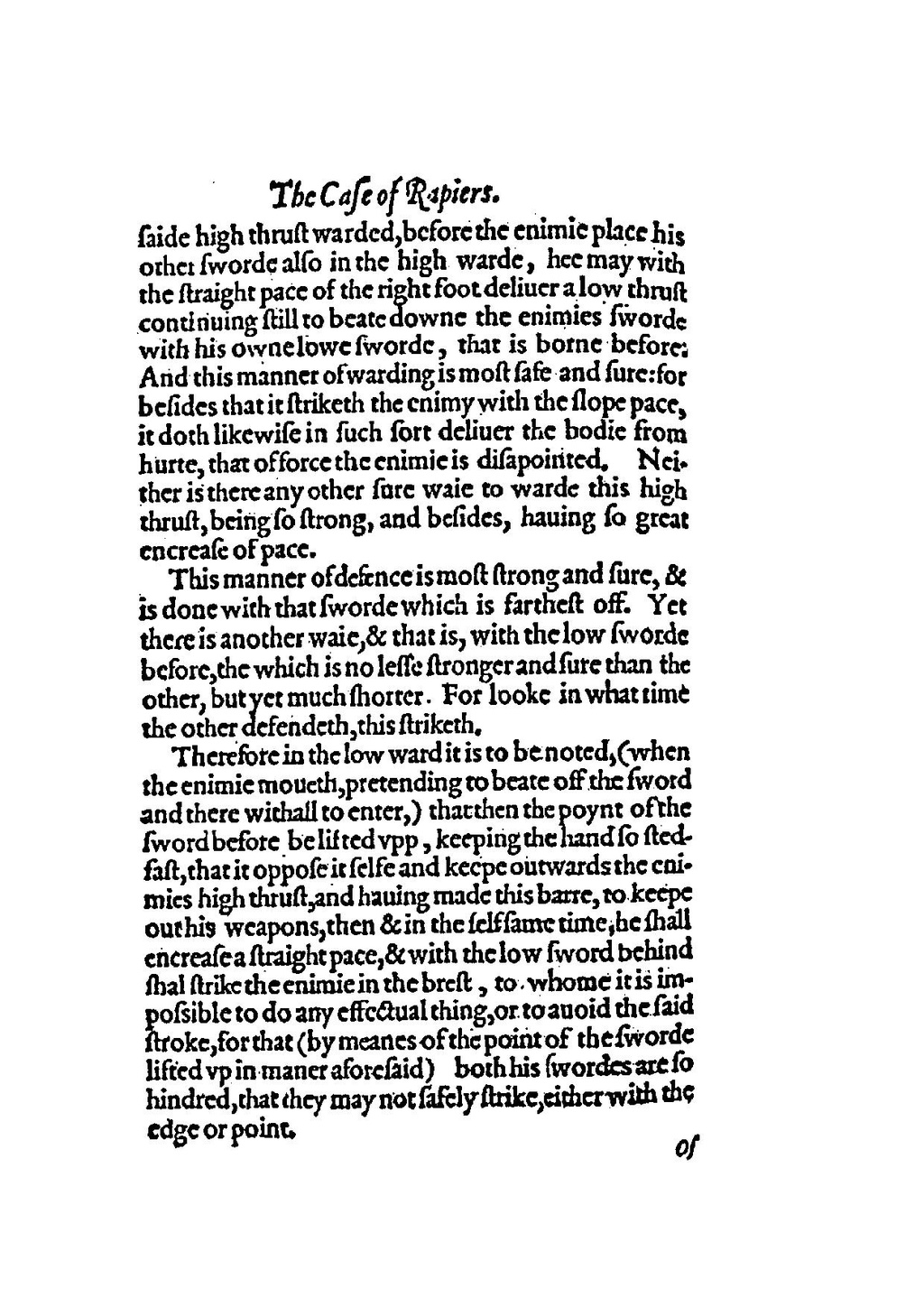saide high thrust warded, before the enimie place his other sworde also in the high warde, hee may with the straight pace of the right foot deliuer a low thrust continuing still to beate downe the enimies sworde with his owne lowe sworde, that is borne before. And this manner of warding is most safe and sure: for besides that it striketh the enimy with the slope pace, it doth likewise in such sort deliuer the bodie from hurte, that of force the enimie is disapointed. Neither is there any other sure waie to warde this high thrust, being so strong, and besides, hauing so great encrease of pace.
This manner of defence is most strong and sure, & is done with that sworde which is farthest off. Yet there is another waie, & that is, with the low sworde before, the which is no lesse stronger and sure than the other, but yet much shorter. For looke in what time the other defendeth, this striketh.
Therefore in the low ward it is to be noted, (when the enimie moueth, pretending to beate off the sword and there withall to enter,) that then the poynt of the sword before be lifted vpp, keeping the hand so stedfast, that it oppose it selfe and keepe outwards the enimies high thrust, and hauing made this barre, to keepe out his weapons, then & in the self same time, he shall encrease a straight pace, & with the low sword behind shal strike the enimie in the brest, to whome it is impossible to do any effectual thing, or to auoid the said stroke, for that (by meanes of the point of the sworde lifted vp in maner aforesaid) both his swordes are so hindred, that they may not safely strike, either with the edge or point.
Of

